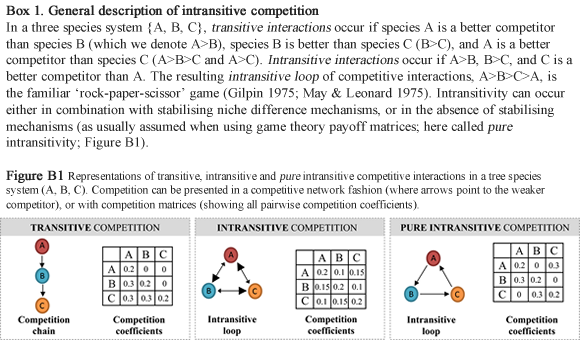20 June 2017 | By Laure Gallien
The theory about the mechanisms underlying the coexistence between species has been developed with a focus on interactions between pairs of species, often ignoring more complex and indirect interactions that can appear in competition networks. In a recent Ecology Letters paper, C·I·B post-doc Laure Gallien and co-authors showed how complex indirect interactions can be integrated into our understanding of species coexistence.
The authors specifically investigate the situations of cyclic competition, also called intransitive competition, and its effect on species coexistence. Cyclic competition occurs when there is not a single best competitor and competitive hierarchies between species can be arranged to form a loop (e.g. as in the classic game rock-paper-scissors, where rock>scissors>paper>rock). With theoretical simulations of community dynamics, their paper demonstrated that cyclic competition can either stabilize or destabilize species coexistence, depending the length and the topology of these competition loops.
“Quantifying and predicting the effects of complex indirect competitive interactions on coexistence is not a simple task”, said Laure Gallien, “but our study should help make such investigations possible. A key next step in this literature, which has thus far been strongly dominated by models, will be to explore whether and how intransitive interactions contribute to the maintenance of biodiversity in natural communities.”
Read the paper in Ecology Letters
For more information, contact Laure Gallien at laure.gallien@gmail.com

